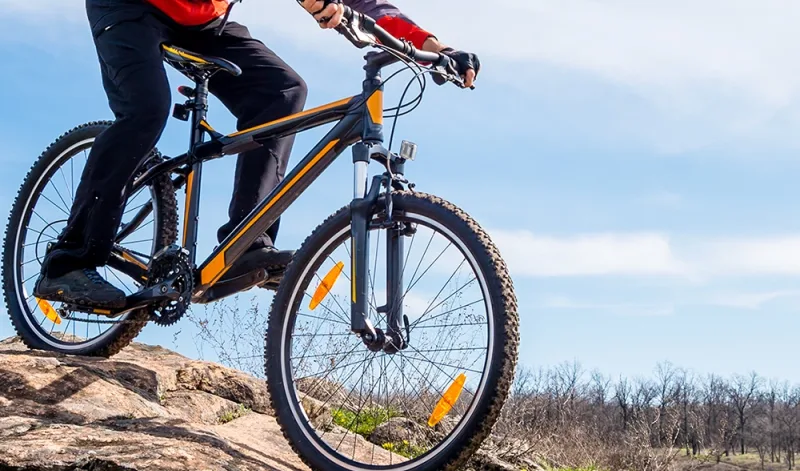You’ve probably heard the term “e-bike” thrown around quite a bit recently, particularly if you’re interested in finding an easier way to commute to work or speed around town without relying on your own pedal power. E-bikes are, at a basic level, a normal bike with the addition of an electric motor to help you move around. They’ve become exceedingly popular in recent years, with the suggestion that they could be the future of transportation as they’re healthy and eco-friendly alternatives to driving.
Home › Bicycle Insurance › Bicycle Insurance › A Beginners Guide to E-Bikes
A Beginners Guide to E-Bikes
What exactly is an E-Bike?
E-bikes are also known as “electrically-assisted pedal cycle” or an EAPC within UK legislation – which neatly sums up exactly what most people are talking about when they mention e-bike. There are moped and motorbike variations of e-bikes, which we cannot provide insurance for so we’re going to focus on the bicycle variant as these are the most popular and are the ones that we can insure under our bicycle insurance policy
To qualify as an EAPC and not a motor vehicle, the e-bike must meet the following requirements:
- The bike must have pedals that can propel it
- The maximum rated power of the electric motor must not exceed 250W
- The electrical assistance must cut-off when the vehicle reaches 15.5mph
If the bike meets all the above requirements, it does not need to be registered within the UK as it doesn’t have to be insured as a motor vehicle and is treated the same as the average bike. This means that you don’t have to pay vehicle excise duty or be insure as a motor vehicle – you can use a specialist e-bike insurance product instead.
Why would I want an E-Bike?
As we’ve mentioned, e-bikes are proving increasingly popular options for commuters as people want to escape the rat race of driving and public transport. They’re an appealing alternative to normal bikes as they provide the extra boost from their electric motor, meaning you can travel further and arrive with less sweat and fatigue at your workplace.
If you’re already a cycling aficionado, you may be interested in a several different road bikes and mountain bikes that come with electric motors – for cyclists who want a little boost uphill if they’re newer to cycling or want to keep up with a club, or if you’re a leisure cyclist who wants to enjoy the scenery without a lot of the slog that normal road cycling requires.
What are the different types of E-bike?
The uses for an e-bike are almost limitless, but when you’re looking at purchasing one it’s worth keeping in mind the most popular types of bikes you can potentially purchase. This will help narrow down your search and ensure you’re getting the type of electric bike that’s right for you.
- Urban, City and Hybrid e-bikes are all closely related and sit under the same “type” of electric bike. These bikes look like your typical bicycle, with flat handlebars and a normal seating position. These bikes are comfortable and very easy to ride for any level of cyclist, making them a popular type of e-bike. Their motors are larger than the other types of e-bikes, to provide ample boost through your ride. It’s worth shopping around when it comes to selecting an urban e-bike as the bikes will differ depending on if they’re swaying more towards a hybrid bike type setup versus a city bike.
- E-road Bikes are almost the same visually as a normal road bike – the battery and motor are cleverly tucked inside the frame so it’s hard to spot unless you’re really looking. As road bikes rely on being lightweight and aerodynamic, you tend to find that the motors aren’t designed to offer constant support to your riding. They’re made to assist you now and again, rather than during the entire ride.
- Folding e-bikes do what the name suggests – they fold into a compact size which makes them ideal for commuters who need to take them on public transport or store them within the office. As these bikes have the electric motor and battery that all e-bikes possess, it makes them heavier than normal folding bikes. There are also a larger number of these bikes that are designed for a something slightly more adventurous that just your average commute. High powered motors and the fact they can be folded to fit into the back of your car makes them ideal for rougher trails or for carrying extra weight while bikepacking.
- Electric Mountain Bikes or e-MTBs as they’re also known, are mountain bikes that include an electric motor. These bikes tend to include a mid-level motor which provides a higher level of power at lower speeds than the other types of e-bikes to help get you around difficult terrain. Naturally, they also co
Motors, Power, Batteries and Range
In the UK the maximum continuous rated power of an electric motor must not exceed 250W (to qualify as an EAPC). You’ll find that most of the e-bikes sold within the UK meet this requirement, but it doesn’t really explain how it’ll perform during your ride.
The measurement you should look out for is torque. A motor that has a higher torque will find it much easier to start moving from a stationary position or to climb up a steep slope. If you’re intending on cycling with a large amount of shopping, or perhaps even a child, higher torque will be important for you.
There are two main types of electric motors you will find on e-bikes. These are mid-motors and hub-motors. Hub motors are positioned near the pedals and mid motors are positioned on one of the wheels. Mid motors, in general, deliver a higher amount of torque due to their positioning. This also tends to make them more expensive than their hub-motor counterparts.
Lastly, the battery is a key part in the performance of an e-bike. A bigger battery is good as it has the capacity to store a larger amount of power, but you really need to look for the efficiency of a battery to understand the bike’s potential range a more efficient bike will allow you to keep going for longer without having to recharge.
Insuring Your E-Bike
Purchasing an e-bike can be quite the investment. It’s always recommended that you find a flexible bike insurance policy that covers you; whether that’s for weekend racing or for commuting to work daily, as you need to protect yourself and your electric bike.
Find out how Assetsure can protect you and get a quote to insure your e-bike today.






























